From the foregoing, it is an established fact that while other animals become extinct as a result of environmental factors, dogs take a different route. They tend to disappear because people no longer find them fashionable or simply because they were no longer needed. Studying the history of dogs will reveal that a good number of the treasured pets we see today may not be around in the next few years to come as they usually come and go after satisfying the need they were created for. Likewise, many dogs existing today were not there in the past.
About 339 different dog breeds exist in the world today according to the World Canine Organization and this does not include the extinct species. Although it breaks our hearts to know that these dogs have gone into extinction, we take consolation in the fact that they left rich histories behind. From the dog species that were erased from the world through inbreeding, to the ones that became extinct because of the lack of interest, below are fifteen extinct breeds you won’t believe ever existed in the world.
English Terrier
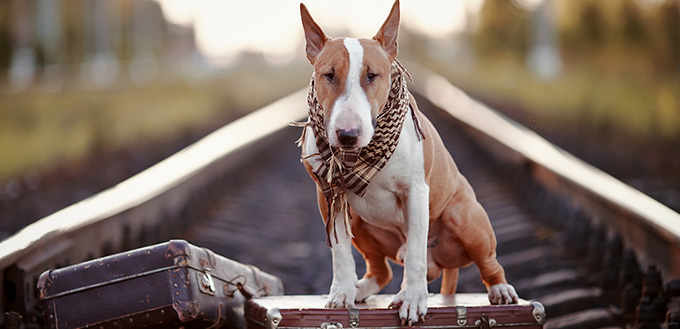
The Terrier breed has existed in Great Britain since the 18th century and has gone through a lot of changes. In the early 1980s, the English White Terrier was born out of the need of some breeders to create a new species from the version of small white working terriers with prick ears. Other species that stemmed from this prick-eared dog include Fox Terrier, Jack Russell Terrier, Sealyham Terrier – all in The United Kingdom and then, in the United States, the Boston Terrier, and the Rat Terrier is the dominant breeds.
Sadly, the English White Terrier couldn’t sustain the interest of the public for long and was ultimately erased. The breed was rejected by the U.K. Kennel Club, categorizing it as a failed project. About three decades after its creation, the dog breed became extinct but not before it was crossbred with the Old English Bulldog to produce the Boston Terrier and Bull Terrier. The English Terrier also goes by the names White English Terrier, Old English Terrier, and British White Terrier
Tweed Water Spaniel
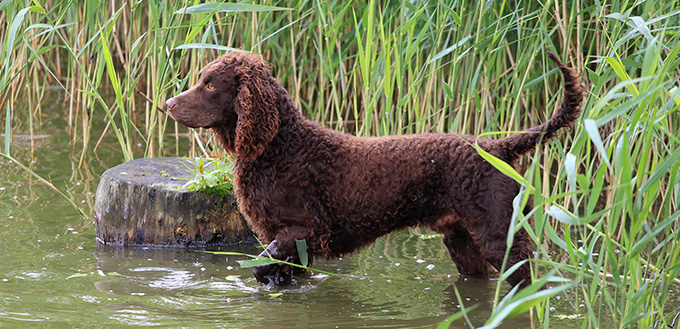
The Tweed Water Spaniel is another extinct dog that many never knew existed. Its origin can be traced back to England and the species became extinct as far back as the 19th century and are known to be mostly brown in color with athletic tendencies. They inhabited the area around Berwick-upon-Tweed, close to the River Tweed and the Scottish Borders and as the name suggests, is a type of water dog.
Due to its reservations in terms of territory, this breed was not well known outside the local terrain where it came into existence via the crossbreeding of the St. John’s water dog and local water dogs. Though the Tweed Water Spaniel is now extinct, it contributed to the creation of the modern Curly Coated Retriever and Golden Retriever dog species.
Blue Paul Terrier
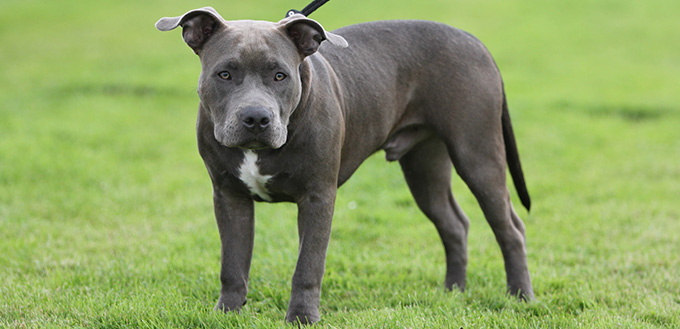
Also known as the Scottish Bull Terrier, Blue Poll and Blue Poll Bulldog, this breed supposedly originated from Scotland, although this fact is often disputed. There are numerous claims to the origin of the breed but in all, it seems to have been a descendant of a bulldog and terrier through crossbreeding that may have included other similar dogs. The breed enjoyed popularity in Scotland during the mid-19th century but like most that came before and after it, the popularity began to fizzle out in the early 20th century, leading to eventual extinction.
The Blue Paul Terrier was characterized by its large head and weight around 45 lb (20 kg), a weight that complemented its estimated height of between 14 in (36 cm) at the shoulder and 20 in (51 cm). The color varied between dark blue, brindle, and red.
Kuri Dog
The Polynesians introduced this breed to New Zealand, where it is recognized as the country of origin. The name Kurī came from the Māori tribe as their ancestors brought the dog breed along while migrating from East Polynesia during the 13th century AD. The Kuri dog is one of the oldest breeds to have walked the earth and it left behind a lot of tales and the Māori tradition believed that the brother-in-law (Irawaru) of the demigod Māui was transformed into the first dog.
The Kuri Dog howled in place of barking and was bushy-tailed, with short legs and had colors ranging from yellowish-brown to black, white, or spotted. What’s more, the Maori ate it as meat and when the European settlers began to flood into New Zealand, the Kuri Dog became extinct in the 1860s, mainly because it could not manage to survive to interbreed with European dogs in the area.
Molossus Dog
Ancient Greece was the home of these formerly large and ferocious hounds also known as Molossian hound or molosser. They were so popular during their existence that an image of it was used on the silver coinage issued as the emblem of the Molossians. Ancient literature further confirmed the popularity of the Molossus Dog as it was often mentioned in the writings of Lucretius, Statius, Aristophanes, Plautus, Aristotle, Virgil, Horace, Lucan, Martial, Nemesianus, Oppian of Apamea, Seneca, and Grattius, among other scholars.
Bullenbeisser
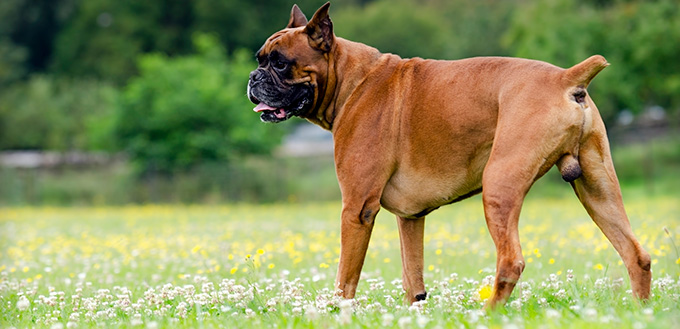
An ancestor to the modern Boxer, the Bullenbeisser is also called German Bulldog and was a breed in Germany before it became extinct. This extinct breed was popular as a dog with so much strength and agility and the present Spanish Bulldog shares similarities with it. The Bullenbeisser was crossbred out of existence just like the Old English Bulldog. A cross of Bullenbeissers with Bulldogs brought from Britain was coordinated by German breeders Roberth, Konig, and Hopner in the late 1870s to create a new breed that is known today as the Boxer.
Thylacine
The Thylacine, though extinct, had its origin in the Australian mainland and the islands of Tasmania and New Guinea. It is among the largest carnivorous marsupials known to man as far back as four million years ago. Relatively shy and nocturnal, the Thylacine shared similarities with different animals, including the tiger, kangaroo, and wolf – it had stripes on the lower back like a tiger, abdominal pouches like a kangaroo, and candid-like features like a wolf. The Tasmanian devil or the numbat are likely relatives of this extinct breed. Though not a dog, it looked like one and was forced into extinction for several reasons, including hunting, diseases, the introduction of dogs, and the invasion of humans who took over its habitat.
Salish Wool Dog
Also known as the Comox dog, this extinct breed was created by the people of Coast Salish (now Washington State and British Columbia). As the name implies, the Salish Wool Dog was characterized by white long wooly fur and appeared small in size. Due to the absence of sheep or any other source of wool at the time, the fur of the Salish Wool Dog was used for making the famous and desirable “Salish” blankets. The fur of the Salish Wool Dog was known to be very thick and rich in texture.
Alpine Mastiff
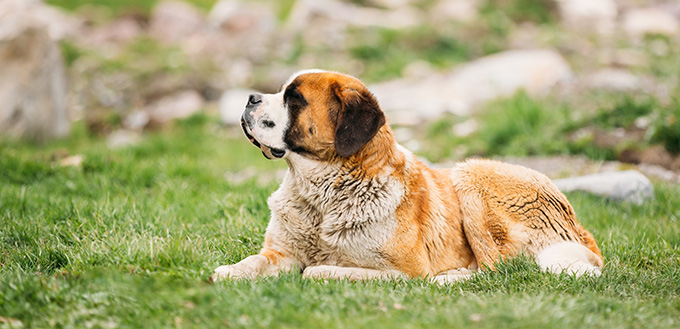
Though there have been many breeds of mastiffs, the Alpine Mastiff was among the earliest to attain a gigantic size. It originated from northern Europe before 500 B.C and the extinct Molosser dog breed is recognized as the ancestor of the St. Bernard breed, and also contributed to the modern Mastiff. The largest of them may have measured more than 1 m (39 in) at the shoulder and weighing up to 160 kg (350 lb). Since the 1970s, attempts are being made to recreate the Alpine Mastiff by crossbreeding the likes of Saint Bernard, Great Dane, Great Pyrenees, and Bernese Mountain Dog.
Hare Indian Dog
This breed was bred in northern Canada by the Hare Indians who majorly used them for coursing. The Hare Indian Dog had a striking resemblance to the coyote in terms of speed and other features, however, the domesticated temperament and other features set it aside as a domestic dog. Just like the extinct breed that outlived their relevance in the world, the Hare Indian Dog became useless once the aboriginal hunting methods became outdated. Interbreeding with other dogs further pushed the identity of the dog into oblivion in the 19th century.
Notwithstanding, there are dog breeds that are often linked to the Hare Indian dog in recent times. This breed had a small body frame with a small head and pointed ears. It also had thick and bushy tail, as well as a base colour of white with grayish-black patches or brown shades.
Turnspit Dog
The Turnspit dog was highly domesticated in the sense that it used to help chefs and cooks in the kitchen, a feat that earned it the name Kitchen Dog and the Cooking Dog, among other names. Its origin has been traced to the United Kingdom where the short-legged dog with a long body frame was bred to turn meat on a wheel called turnspit by running on it.
The aim here was to get the meat to cook evenly by constantly turning it on the fire and due to the strenuous nature of the duty of the Turnspit Dog in the kitchen, a lot of them were used to work in shifts. The Turnspit Dog basically became extinct because it was perceived as a lowly and common dog and of course, modern technology came up with better ways to cook the meat evenly.
Cordoba Fighting Dog
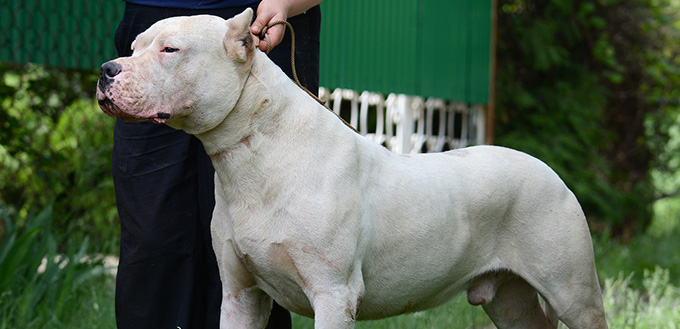
Originating from Córdoba, Argentina, the Cordoba fighting dog was characterized by its very aggressive nature, probably because it was used as a fighting dog. It was fierce, strong, relentless and very vigorous when the situation calls for it. The breed was created by crossbreeding Alano Español, Mastiff, Bull Terrier, Bulldog, and Boxer.
The violent nature of the Cordoba fighting dog may have contributed immensely to its extinction. It was always poised to fight to the death and can withstand any form of pain while in action. Thus, the fighting pits became the burial ground of many members of this breed of dogs. The Cordoba Fighting Dog is the direct ancestor of the Dogo Argentino which was created in the 1920s by cross-breeding the Cordoba dog with the likes of the Great Pyrenees, Great Dane, Bulldog, Dogue de Bordeaux, and Bull Terrier.
Talbot Dog
This extinct dog breed originated in Normandy where it lived in the Middle Ages. It was also common in England at this time and was used as a hunting hound. The closest depiction of the animal characterized it as mostly small or medium-sized. It was also white and had short strong legs, long drooping ears, a tiny waist, and a long curled tail. Though extinct, The Talbot Hound is believed to have its descendants still roaming the earth. The modern beagle and bloodhound are believed to have the Talbot Hound as their ancestor.
While it is clear that the Talbot Hound was used as a hunting dog, it is not known if it was a scent hound that sniffed things out with the nose, a sighthound that sees far and wide, or one of those dogs that dig out quarry.
Tahltan Bear Dog
No, the Tahltan Bear Dogs weren’t named as such because they looked like bears, the extinct creatures got the name from their ability to hunt bears as raised by their owners who were largely Tahltan people. There are so many factors that make the extinction of this breed of dog a painful fact to stomach, ranging from their agility to their foxy appearance and what have you.
A handful of features distinguish the Tahltan Bear Dog. While they were primarily known and admired for their unusual short and bushy tail which they carry erect, their color varies from dark brown to blue and black. In addition to that, the domesticated carnivorous mammal occasionally had white patches on their feet and tail but mostly on their chest. Known as Chien d’ours de Tahltan in some quarters, they were quite small when compared to other breeds. At the shoulders, they roughly stood around 12 to 17 inches and weighed anything from 14 to 20 pounds.
African Hairless Dog
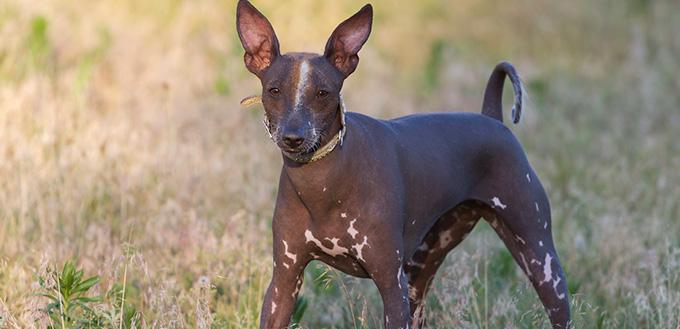
The African Hairless Dog, also known as Abyssinian Sand Terrier, may have derived its name from the nature of its body. They are generally hairless on every corner of the body except for the roof of the head and towards the end of the tail. Some of the members of this breed, however, are complete without any hair on the body. They often come in bronze, elephant-gray, grayish-black, black, pale sandy or mottled colors. This dog breed is generally made up of fearless and loyal dogs that are ready to please. It originated in Africa.
Some More Dogs On The Brink Of Extinction
Based on the varying reasons dogs go into extinction, a lot of breeds are headed towards being snuffed out of existence. A lot of them are just becoming too difficult to manage or the task they were bred for in the first place is no longer needed in the modern age, thus, nobody cared for the future of the species.
One of such dogs is the American Water Spaniel loves to hunt and research has found that it’s already losing popularity and might not be here in the next 50 years. Additionally, the Irish Red and White Setter needs a lot of exercises and has proven very difficult to train, thus, breeders tend to favor the all-red setters, thereby endangering the red and white species.
Additionally, according to The Telegraph, only 77 Bloodhounds were registered in 2015 which means the dog breed might be headed for extinction soon and just 78 English Toy Terriers were registered in 2015; the blame might go to their incessant barking attitude if they eventually become extinct.
What’s more, the Gordon Setters were originally bred to hunt but they are gradually reducing in number, even though they have evolved to become loyal family pets over the years and the Mastiff nosedived from 475 in 2005 to a mere 139 in 2013, indicating that this calm descendant of the molossus is no longer safe. Some of the other dogs you might not be able to find in the next few decades include Smooth fox terrier, Irish Wolfhound, Dandie Dinmont Terrier, Sealyham Terrier, Otterhound, Sussex Spaniel, and Glen of Imaal Terrier.
To summarise, creating pets that reflect the needs of humanity has become the norm over the years. Naturally, these needs go through a series of changes, causing some dog breeds to go into extinction because, apparently, they have outlived their relevance and have no audience in the dynamic society anymore. If it’s any consolation, however, most of the extinct breeds left their prints in the modern world by becoming ancestors to some of the dog breeds that are still trending.
Source:
- Shayna Meliker, 7 Fascinating Dog Breeds That No Longer Exist, VetStreet






its nonsense about the thylacine , it didnt originate in greece , it australia /tasmania
Updated, thank you!
Thylacine is marsupial from Australia. Not a dog at all. Not even close.